Experience the spiritual significance of Dakshineswar Kali Temple, home to Goddess Kali and Sri Ramakrishna, offering peace, prosperity, and divine blessings.
Table of Contents
Introduction
Dakshineswar Kali Temple is one of the most revered and spiritually significant temples in India, located on the eastern banks of the Hooghly River in Kolkata, West Bengal. Dedicated to Goddess Kali, this magnificent temple is a symbol of devotion, faith, and architectural brilliance. Thousands of devotees and tourists visit Dakshineswar Kali Temple every year to seek blessings and experience its divine aura.
What makes Dakshineswar Kali Temple even more special is its deep connection with the great saint Sri Ramakrishna Paramahamsa, the spiritual guru of Swami Vivekananda. His profound spiritual experiences and teachings at this sacred place have made it a pilgrimage site for seekers of wisdom and enlightenment. The temple’s historical and cultural significance, along with its serene atmosphere, makes it a must-visit destination for both spiritual seekers and travelers.
History of Dakshineswar Kali Temple
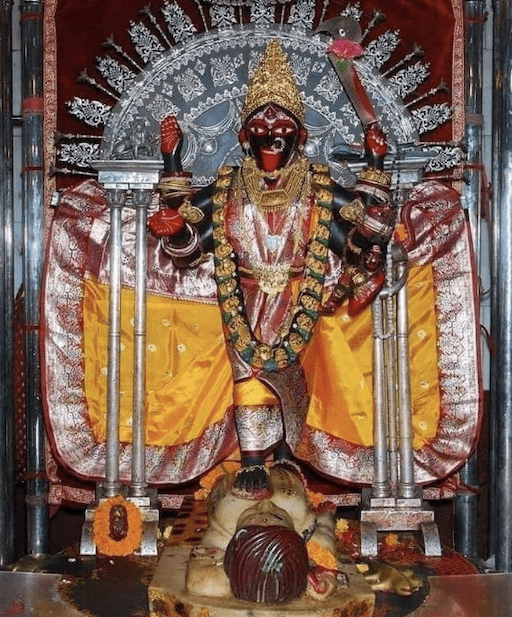
Dakshineswar Kali Temple was built in 1855 by Rani Rashmoni, a renowned philanthropist and ardent devotee of Goddess Kali. According to legend, Rani Rashmoni had a divine vision of Goddess Kali the night before she was to embark on a pilgrimage to Varanasi. In this vision, the Goddess instructed her to build a grand temple on the banks of the Ganges, where devotees could worship her. Obeying this divine command, Rani Rashmoni acquired 20 acres of land in Dakshineswar and oversaw the construction of the temple complex.
The temple soon became a center of spiritual awakening, attracting saints, philosophers, and seekers of divine wisdom. One of the most significant figures associated with Dakshineswar Kali Temple was Sri Ramakrishna Paramahamsa, who served as the temple’s head priest. During his time at the temple, he experienced profound spiritual revelations and developed his teachings on devotion, divine love, and the unity of all religions. His presence transformed Dakshineswar Kali Temple into a revered spiritual hub, drawing devotees from across India and beyond.
Architecture of Dakshineswar Kali Temple

The Dakshineswar Kali Temple is a striking example of Bengali Navaratna architecture, a design that’s both rare and awe-inspiring. Standing proudly at a height of 100 feet, the main temple is an imposing structure, its nine spires reaching skyward in a dramatic display of devotion. Surrounding the central temple are twelve smaller Shiva temples, each with its own significance, creating a peaceful procession of sacred spaces. There’s also a Radha-Krishna temple tucked within the complex, further enhancing the temple’s spiritual charm.
What truly captures the essence of Dakshineswar Kali Temple is the craftsmanship embedded in every corner. The temple’s walls, columns, and ceilings are intricately carved with divine figures, celestial beings, and mythological stories, offering a feast for the eyes and a window into the sacred. This fusion of artistry and faith makes the structure not just a place of worship, but an architectural marvel.
Nestled within the temple grounds is the sacred Panchavati Garden, where Sri Ramakrishna Paramahamsa meditated. The peaceful, tree-lined retreat creates an atmosphere of deep contemplation, allowing visitors to feel the enduring spiritual energy that permeates the space. Together, the temple’s magnificent design and serene surroundings make it an unforgettable journey for the soul and the senses.
Spiritual Significance of Dakshineswar Kali Temple
- Goddess Kali as Bhavatarini: The temple’s main deity, Goddess Kali, is worshiped as Bhavatarini, the “redeemer of the universe.” Devotees believe she holds the power to liberate souls from worldly attachments, guiding them toward spiritual enlightenment.
- Connection with Sri Ramakrishna: The temple is deeply tied to Sri Ramakrishna Paramahamsa, one of the greatest spiritual leaders of India. He served as the temple’s head priest and had profound divine experiences here, making it a place of spiritual learning and transformation. His teachings on Vedanta, Bhakti, and Tantra continue to inspire millions around the world.
- A Sacred Space for Devotees: Many believe that visiting Dakshineswar Kali Temple brings not only spiritual peace but also prosperity and blessings. The temple is seen as a powerful spiritual hub where the energy of Goddess Kali and the wisdom of Sri Ramakrishna come together, providing a space for reflection, devotion, and personal growth.
- A Source of Divine Energy: The temple’s serene atmosphere and historical significance make it a beacon of spiritual energy, attracting devotees seeking deeper connection and divine insight.
How to Reach Dakshineswar Kali Temple
By Air
The nearest airport to Dakshineswar Kali Temple is Netaji Subhas Chandra Bose International Airport (CCU), located about 15 km away. From the airport, you can easily hire a taxi or use other transport options to reach the temple in approximately 30-45 minutes.
By Train
For those traveling by train, the closest railway station is Dakshineswar Railway Station, which is just a short walk away from the temple. This makes it a convenient option for visitors coming from different parts of Kolkata or nearby cities.
By Road
Dakshineswar Kali Temple is well-connected to various parts of Kolkata by road. Public transport options such as buses, taxis, and auto-rickshaws are readily available, making it easy to access the temple from different locations in the city.
By Ferry
For a unique and spiritual experience, devotees can take a ferry ride from Belur Math to Dakshineswar Kali Temple. This scenic journey along the Hooghly River adds a tranquil touch to the pilgrimage, allowing visitors to enjoy the serene beauty of the river while approaching the sacred temple.
Accommodation Options Near Dakshineswar Kali Temple
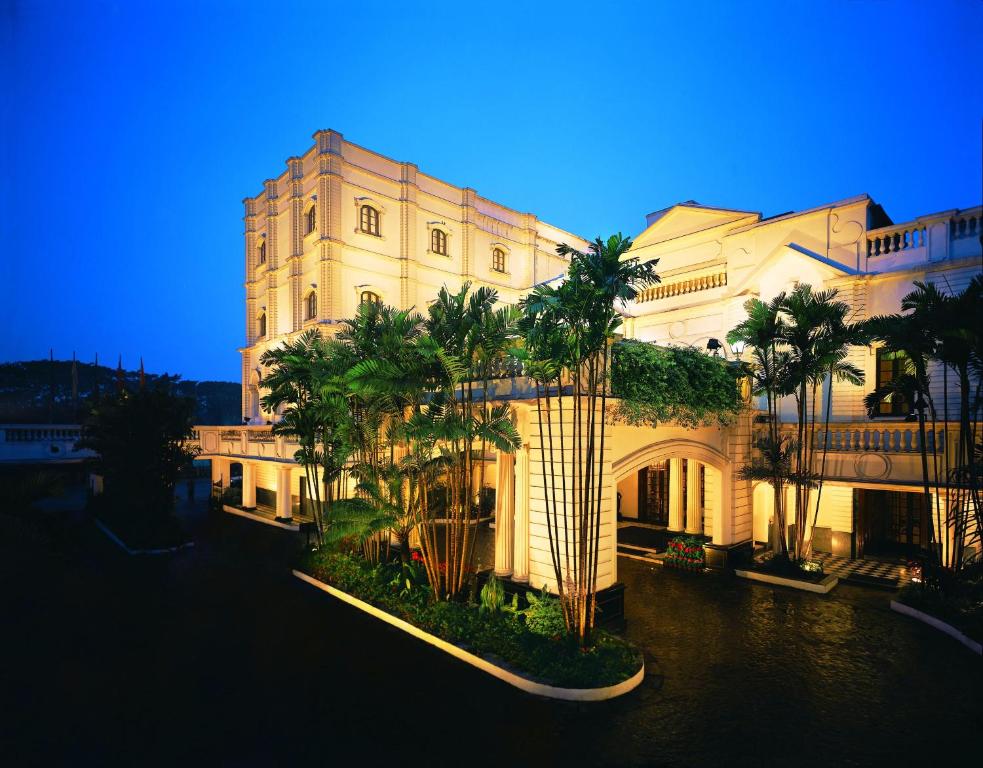
1. Budget Accommodation
- Dakshineswar Guest House: A convenient and affordable choice for pilgrims, this guest house offers basic amenities for a comfortable stay.
- Small Lodges and Dharamshalas: Nearby lodges and dharamshalas, such as Sri Ramakrishna Ashram and Belur Math Guest House, provide simple, no-frills accommodation for those looking for a budget-friendly option with a spiritual vibe.
2. Mid-Range Hotels
- OYO Properties: Several OYO hotels are available around Dakshineswar, offering decent rooms with modern amenities at an affordable price.
- The Lalu Hotel: A boutique-style hotel with a cozy atmosphere, providing a comfortable stay at moderate rates. It’s perfect for those looking for a homely vibe but with the convenience of modern facilities.
3. Luxury Hotels
- The Oberoi Grand Kolkata: Known for its luxury and grandeur, this 5-star hotel provides a lavish experience, offering top-notch amenities and impeccable service. It’s located about 30 minutes away from Dakshineswar, making it ideal for travelers who seek a premium stay.
- Hyatt Regency Kolkata: Located around 10-12 km from Dakshineswar, this luxury hotel offers spacious rooms, world-class dining, and excellent amenities, providing a relaxing stay after a day of sightseeing or temple visits.
- Swissotel Kolkata: Another luxurious option, Swissotel offers a blend of comfort, elegance, and relaxation with its modern amenities, ideal for visitors seeking a premium experience.
Nearby Attractions in Dakshineswar & Kolkata
1. Belur Math
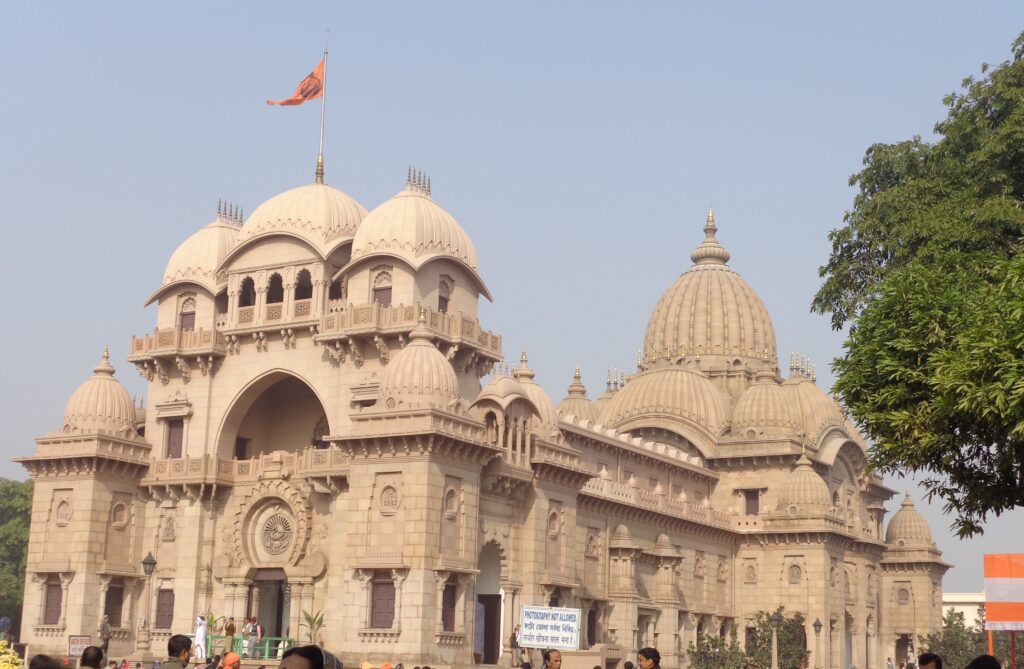
- Located just across the river from Dakshineswar, Belur Math is the headquarters of the Ramakrishna Mission, founded by Swami Vivekananda. It is a place of immense spiritual significance, featuring beautiful architecture and offering a peaceful atmosphere for meditation and reflection.
2. Adyapeath Temple
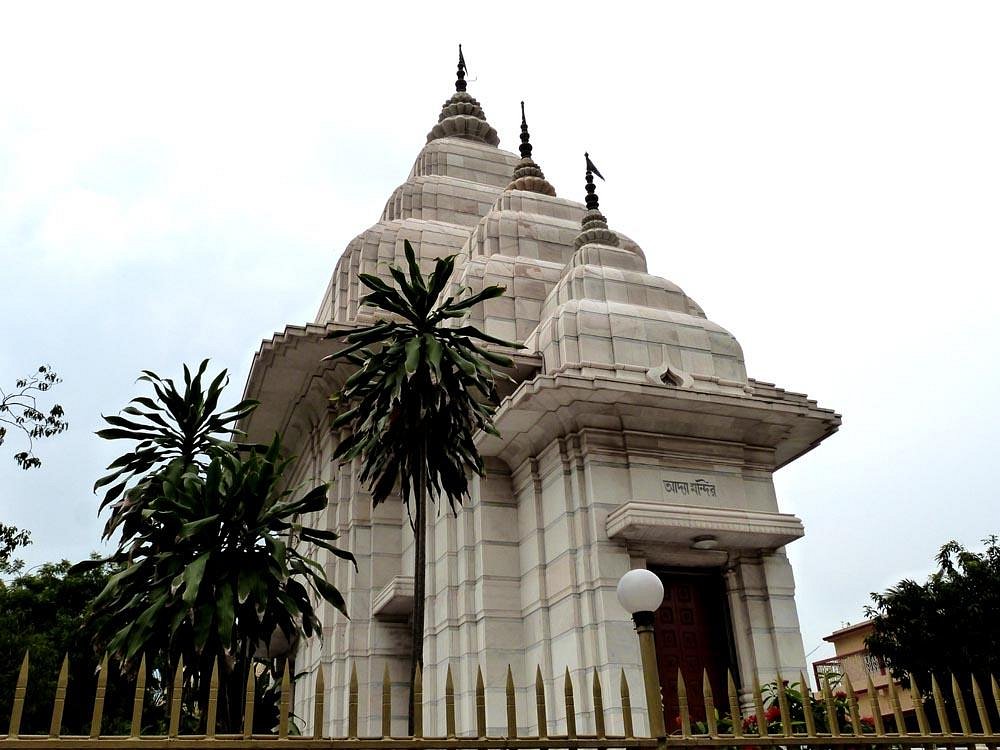
- Situated a short distance from Dakshineswar, the Adyapeath Temple is dedicated to Goddess Adya Shakti. Known for its serene environment and intricate sculptures, this temple is a must-visit for those interested in spiritual experiences and traditional Bengali architecture.
3. Kalighat Temple
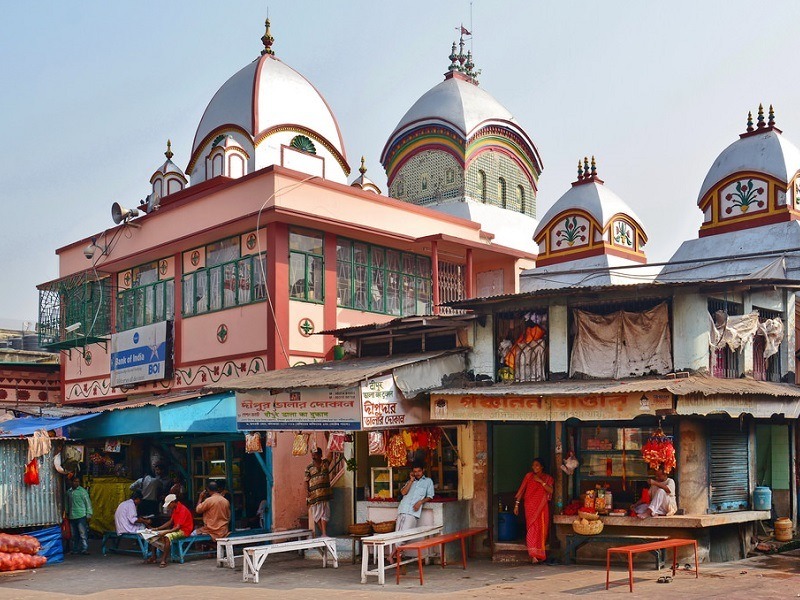
- One of the 51 Shakti Peethas, Kalighat Temple is another significant Kali temple in Kolkata. Located in the southern part of the city, it draws countless devotees and holds historical and religious importance as a revered pilgrimage site.
4. Howrah Bridge
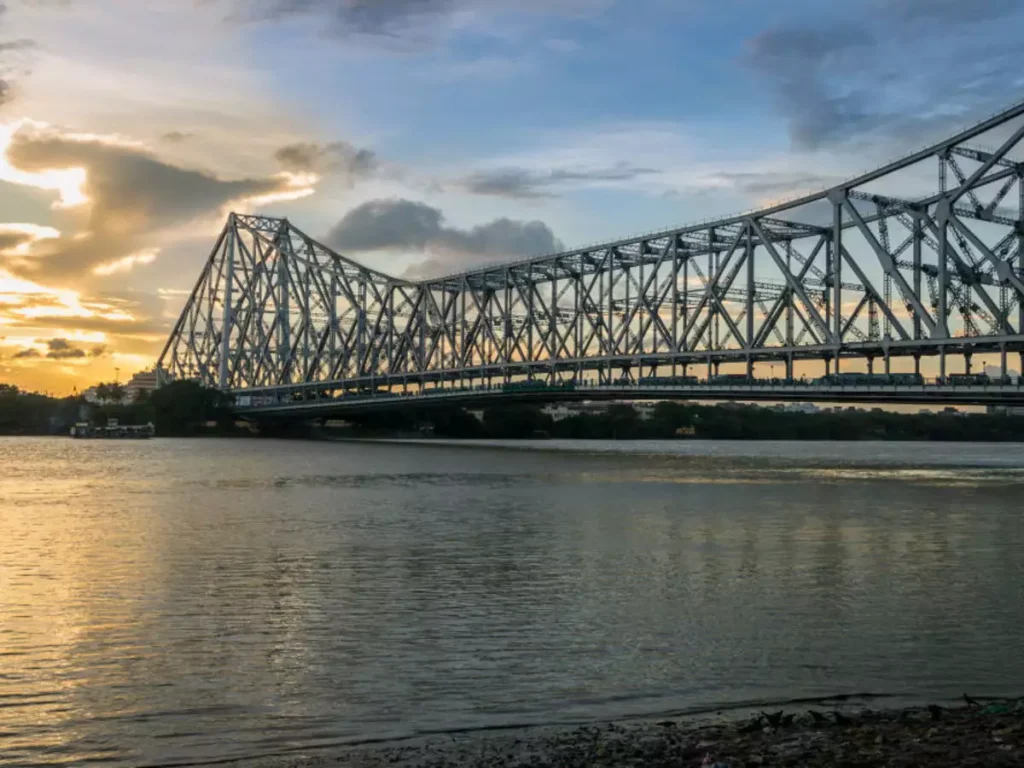
- A short drive away from Dakshineswar, the Howrah Bridge is one of Kolkata’s most iconic landmarks. It’s a feat of engineering, connecting the city of Kolkata with Howrah. The bridge provides a breathtaking view of the Hooghly River, making it a great spot for sightseeing and photography.
5. Indian Museum
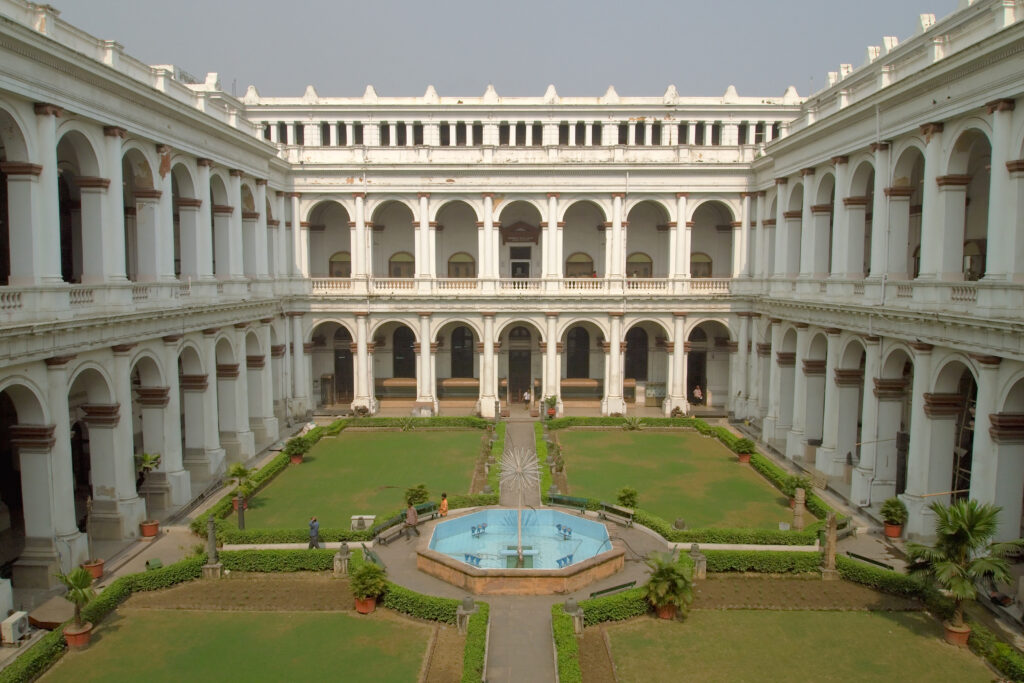
- A short distance from the city center, the Indian Museum is one of the oldest and largest museums in India. It houses a vast collection of art, artifacts, and historical objects, making it a must-visit for those interested in culture and history.
Practical Tips for Visitors
1. Best Time to Visit
- The ideal time to visit Dakshineswar Kali Temple is from October to March, when the weather is pleasant and comfortable for sightseeing and exploring the temple grounds.
2. Temple Timings
- Dakshineswar Kali Temple is open to visitors daily during the following hours:
- Morning: 6:00 AM to 12:30 PM
- Evening: 3:00 PM to 8:30 PM
- Make sure to plan your visit within these timings to experience the temple in its full spiritual atmosphere.
3. Dress Code
- While visiting the temple, modest attire is highly recommended. It’s advisable to wear clothes that cover the shoulders and knees, as a sign of respect for the sacred environment.
4. Aarti Schedule
- Don’t miss the Sandhya Aarti in the evening, which is a mesmerizing ritual held at the temple. The devotional chants, accompanied by the ringing of bells and the offering of lamps to Goddess Kali, create a deeply spiritual and unforgettable experience.
5. Photography
- Please note that photography is not allowed inside the temple premises. This rule helps maintain the sanctity of the sacred space, so be sure to leave your cameras and phones outside while you immerse yourself in the temple’s divine atmosphere.
Conclusion
Dakshineswar Kali Temple is much more than a place of worship; it stands as a symbol of spiritual enlightenment, historical significance, and architectural magnificence. For devotees seeking divine blessings, history enthusiasts exploring India’s rich cultural heritage, or travelers in search of a serene and awe-inspiring destination, this temple offers an enriching experience like no other. A visit to Dakshineswar Kali Temple is not just about witnessing its beauty but about connecting with the deep spiritual energy that fills its sacred grounds, leaving you with lasting memories and a sense of peace.
FAQs
1. What is the best time to visit Dakshineswar Kali Temple?
The best time to visit is between October and March, when the weather is pleasant, and festive vibes fill the air, making it a perfect time for both spiritual and sightseeing experiences.
2. Is photography allowed inside the temple?
No, photography is strictly prohibited inside the temple premises. This rule is in place to preserve the sanctity of the temple and to ensure a peaceful environment for devotees.
3. How much time does it take to explore the temple?
Visitors typically spend 1.5 to 2 hours exploring the temple and its surroundings. This allows ample time to experience the temple’s spiritual atmosphere and admire its architecture and historical significance.
4. Are there any entry fees for visiting the temple?
No, entry to Dakshineswar Kali Temple is completely free for all devotees. There are no charges for visiting the temple or offering prayers.
5. What are the temple’s opening and closing hours?
The temple is open daily from:Morning: 6:00 AM to 12:30 PM
Evening: 3:00 PM to 8:30 PM
6. Is there any accommodation near Dakshineswar Kali Temple?
Yes, there are several accommodation options ranging from budget stays like Dakshineswar Guest House to luxury hotels like The Oberoi Grand and Hyatt Regency Kolkata near the temple.
7. Can I attend the Aarti at Dakshineswar Kali Temple?
Yes, the evening Sandhya Aarti is a mesmerizing experience that visitors are encouraged to attend, as it’s an integral part of the temple’s spiritual atmosphere.
8. Is there any food available near the temple?
While food options around the temple are limited, you can find local eateries and small restaurants offering vegetarian meals near the temple complex.
9. Is there any dress code to follow while visiting the temple?
Yes, modest attire is recommended. Visitors are expected to cover their shoulders and knees to show respect for the sacred environment.
10. How far is Dakshineswar Kali Temple from the airport?
The nearest airport is Netaji Subhas Chandra Bose International Airport (CCU), approximately 15 km from the temple.
For More Information:- Visit Here

